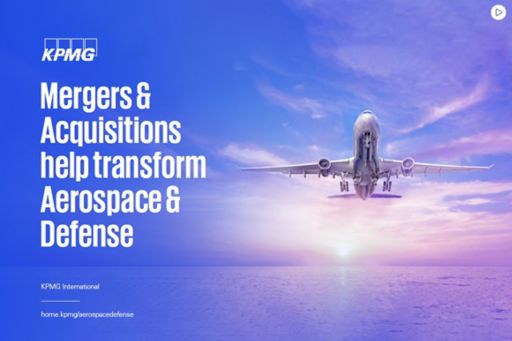The transformation in the Aerospace and Defense (A&D) industry continues unabated, not least in the field of mergers and acquisitions (M&A). Although companies became less preoccupied with COVID-19 in 2022, new events disrupted the prospects for a smooth recovery, and they are likely to reverberate for the foreseeable future. This report analyses how these events and trends are shaping the field of dealmaking in A&D.
In our 2021 report on M&A in aerospace and defense, we predicted that geopolitics, the pandemic and digital transformation would change the face of A&D. The view proved prescient. The war in Ukraine, which began on February 24, 2022, showed that great-power politics had re-emerged as a significant driver of security policy.
Western countries, especially in Europe, are now working more closely together in the face of military aggression. NATO has a new lease on life and defense cooperation among democracies in both the Atlantic and Pacific regions has become a higher priority. The change in the political and security environment has a significant impact on A&D, including in mergers and acquisitions. In civilian aerospace, manufacturers and airlines are adapting to a jump in pent-up travel demand, as health restrictions have eased.
Dealmakers will lead the way in developing new forms of business cooperation, in light of the rapidly changing environment. The 2021 report predicted a surge in M&A deals, fueled by strong cash reserves and a desire to protect supply chains. Large scale deal activity has declined in 2022 with a number of factors at play: valuations remain high, the number of available deals are scarce and governments have further increased transaction oversight to protect national security interests. Higher interest rates in order to decelerate inflation is also playing a part.
Will dealmaking remain less frenetic while the cost of money stays high? Quite possibly, but we predict there will be many smaller technology-focused deals in A&D in the months to come, as OEMs race to compete and fill the gaps in their strategic product and service offerings. Financial investors will also continue to play a greater role in sourcing corporate combinations that offer an opportunity for a higher return on investment.
In the longer term, A&D executives will remain focused both on building their technological capability and strengthening their supply chains. Environmental objectives are also becoming an increasingly higher priority and will, no doubt, help to shape the M&A deals of the future.
To chart a path through this rapidly changing environment, we analyze the various factors leading A&D investment in new directions. Interviews with industry executives as well as KPMG’s A&D subject matter experts also provide an important perspective.
In the midst of turmoil, one thing seems clear. The world economy is becoming more divided and manufacturers will have to adapt. M&A is one way of getting ahead of the curve.
Conclusion
The dramatic changes in geopolitics and the macroeconomy of the past year will shape the A&D sector in ways large and small for a long time. In such a difficult, yet opportunity-filled, environment, three qualities of dealmaking are likely to yield significant benefits:
Resilience. The concept of supply chain sustainability has broadened for A&D companies. Environmental, social and governance criteria remain very important for stakeholders, but the war in Ukraine has underlined the need for a more resilient kind of sustainability, one that is designed to adapt rapidly to geopolitical events.
Agility. There are a finite number of profitable M&A opportunities at any given moment and corporate targets that enhance business value are going to command a premium, whatever the market conditions. Speed and confidence are prerequisites, but they must be based on a strong business intelligence and superior decision-making ability.
Flexibility. Mergers and acquisitions are not the only way to add technological capabilities. Aerospace and defense companies are more willing than ever to consider joint ventures, partnerships and other forms of alliance with companies large and small. Private equity (PE) firms are often catalysts of these kinds of deal.
These traits are likely to be more useful for A&D dealmakers in the future than ever before. Global power competition is magnifying security risks and, as a consequence, corporate competition will also remain hot as companies search for the best M&A deal.









